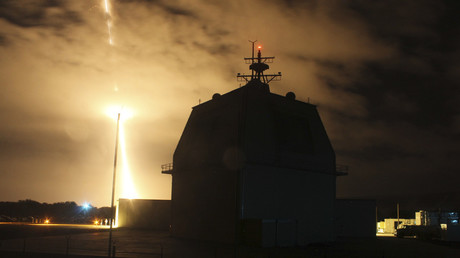What single Latin American currency could mean for the US dollar
RT
Read more
February 01, 2023 at 11:24PM
from RT - Daily news
via IFTTT
The region is planning to launch a new settlement mechanism for non-dollar-denominated trade
The two biggest South American economies, Brazil and Argentina, have recently unveiled plans to create a common currency, sparking speculation about a new global monetary union. RT looks at what the real plan is all about.
- What’s known about the potential Latin American currency?
The new currency will reportedly be called ‘sur,’ which translates from Spanish as ‘south.’ It won’t replace the Brazilian real and Argentine peso, but will rather run beside them. It is not clear yet how the new currency would be valued, but the Brazilian government is reportedly looking at stablecoins as a possible reference. If successful, the sur could become the second most widely-used international currency, considering both its circulation market (about 260 million people) and the volume of GDP of the two nations. - Why do the two countries need a new currency?
The presidents of Brazil and Argentina, Lula da Silva and Alberto Fernandez, explained while meeting in Buenos Aires last week that the common currency is supposed to act as an accelerator for the process of regional integration in South America. According to Lula, the focus is on developing a shared unit of value for bilateral trade to reduce dependence on the US dollar. - What does this mean for the US dollar?
The move by South American nations to create a single currency would not be the end for the greenback, but it would further undermine its status as the world's reserve currency. The dominance of US currency has been declining lately, partly due to Russia and China’s move away from the dollar in trade. - Is this idea new?
The idea of a joint currency has long been floated across the region, with Brazil and Argentina discussing the creation of a “currency unit to enable regional payments,” called the gaucho, back in the late 1980s. Talks on the matter intensified in 1991 with the creation of the Mercosur trade bloc, which also includes Paraguay and Uruguay. However, the plans never materialized. - How realistic is the project now?
Argentine Economic Minister Sergio Massa recently said that Brazil and Argentina would invite other countries in Latin America to join, but urged patience, citing the difficulty of trade integration. Economists confirm that the formation of a joint currency is not an easy task, with Massa pointing to the fact that it took the European Union 35 years to create the euro. - What are the major hurdles for the plan?
The idea of a shared currency between Brazil and Argentina has been met with skepticism by many, mostly due to the discrepancies between the two economies. Brazil, which is a member of the BRICS group, has enjoyed relative economic stability in recent years. Argentina, meanwhile, has been plagued by economic instability for decades. The country has defaulted on its debt several times, most recently in 2020, and has had to resort to capital controls to protect its currency. - What would the new currency mean for the global financial system?
A joint currency would help integrate regional trade between two of the world’s leading food exporters, experts say, noting that the move would mean more control over key resources. A major agricultural power, Argentina is also one of the world's largest sources of lithium, dubbed the “new oil.” Industrialized Brazil has abundant resources of oil, metals, fresh water, and so on. This could make the new currency a major player in the global financial system. - Could this lead to the creation of a new global monetary union?
If established, the new currency union could become the world's second largest after the 20-nation Eurozone. Latin America accounts for 5% of the world's gross domestic product, while the Eurozone accounts for around 14%. However, Brazilian and Argentinian officials have downplayed the idea of a monetary union, saying the real aim of their proposal is to boost bilateral trade. Analysts claim a full-on currency union is a distant prospect.
For more stories on economy & finance visit RT's business section
Read more
February 01, 2023 at 11:24PM
from RT - Daily news
via IFTTT




No comments